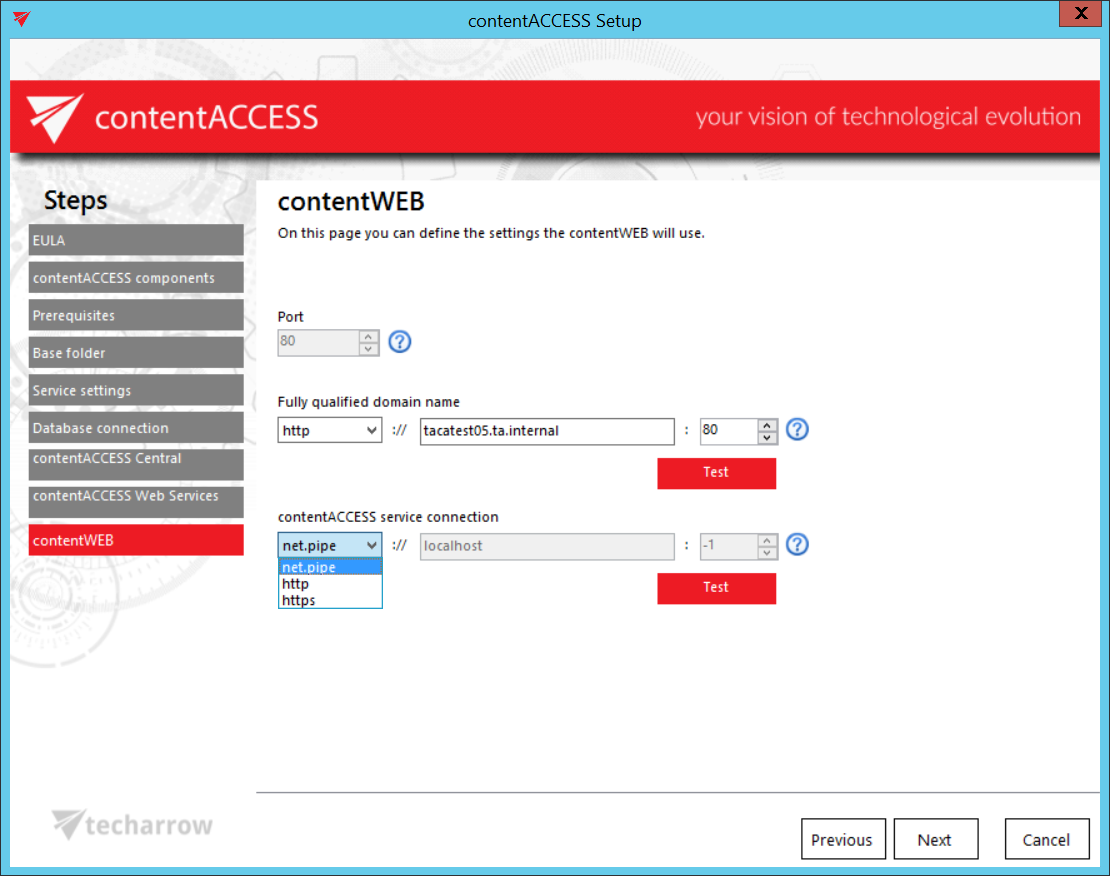2.1.10.contentWEB
On this page you can define the settings that contentWEB (contentACCESS archive user interface) will use.
The same rules apply for contentWEB as for the contentACCESS Central Administration settings above with one exception. contentWEB connection with the contentACCESS server supports net.pipe connection as well.
Port: This port is the physical port of contentWEB used by the Internet Information Services (IIS) on the current server.
Fully qualified domain name: This URL must be accessible from everywhere where the user is coming from. By double clicking the empty text field the wizard puts there the FQDN of that server. If you want to enable a secure connection for the user, choose https.
The contentWEB FQDN that’s defined here is written to the Application settings (System tab => Client applications group => Application settings page) in the Central Administration, and can be changed from there at any time. By the next update the setup will automatically read the value which is defined in the Application settings.
contentACCESS service connection: This URL is used by contentWEB to communicate with the contentACCESS server. If contentACCESS server is installed on the same machine, you can use “localhost” as host name. There are 3 communication types that can be used between contentWEB and the contentACCESS server:
- http – use this if you want to establish a direct connection with contentACCESS. If direct connection should be used, do not change the port number that’s prefilled by the setup package (8736), otherwise contentACCESS proxy connection will be used automatically.
- https – use this to establish a secure connection through the contentACCESS Proxy server
- net.pipe – use this type if contentWEB and contentACCESS are installed on the same machine; this is the fastest and most recommended connection type.

